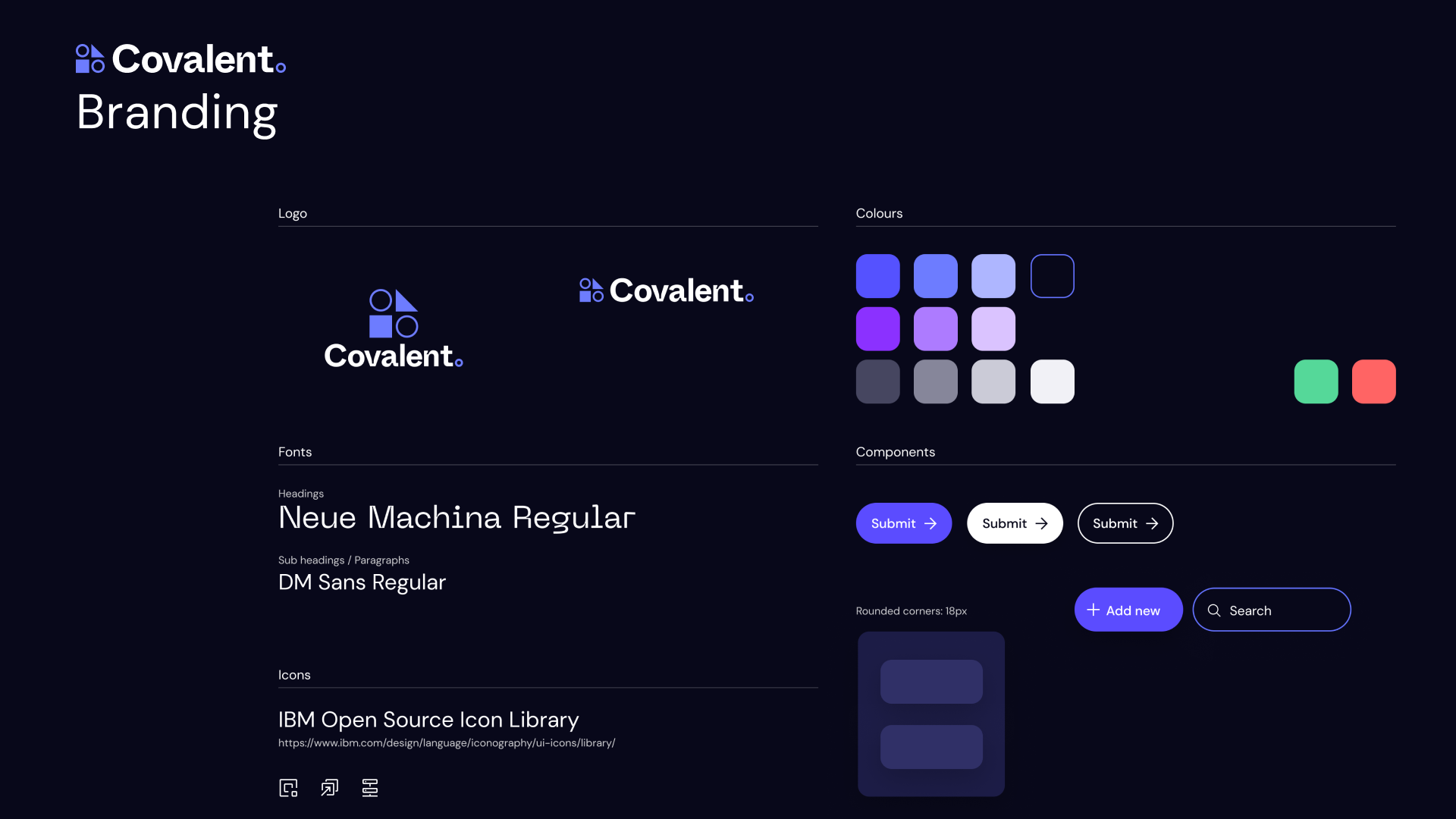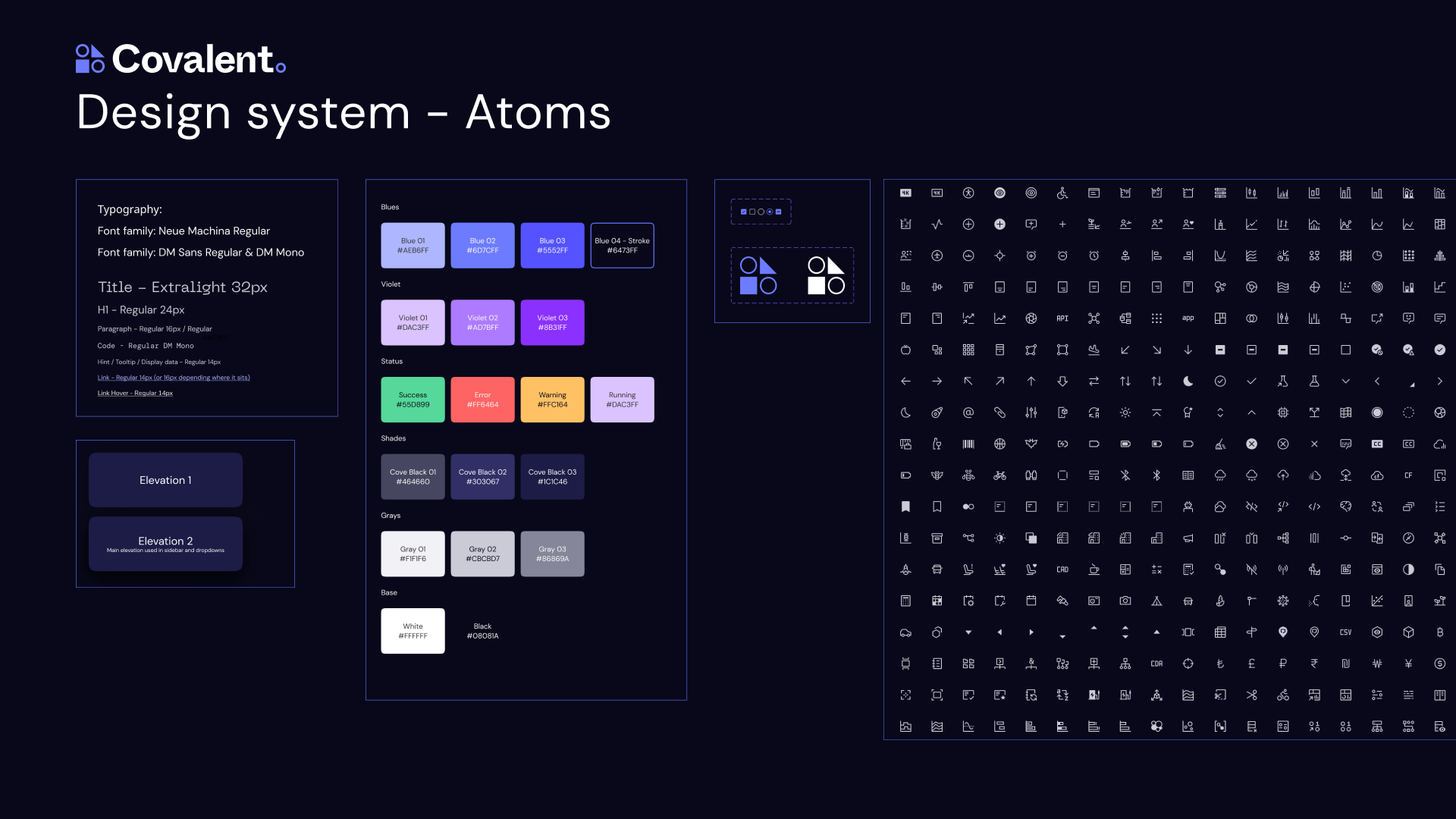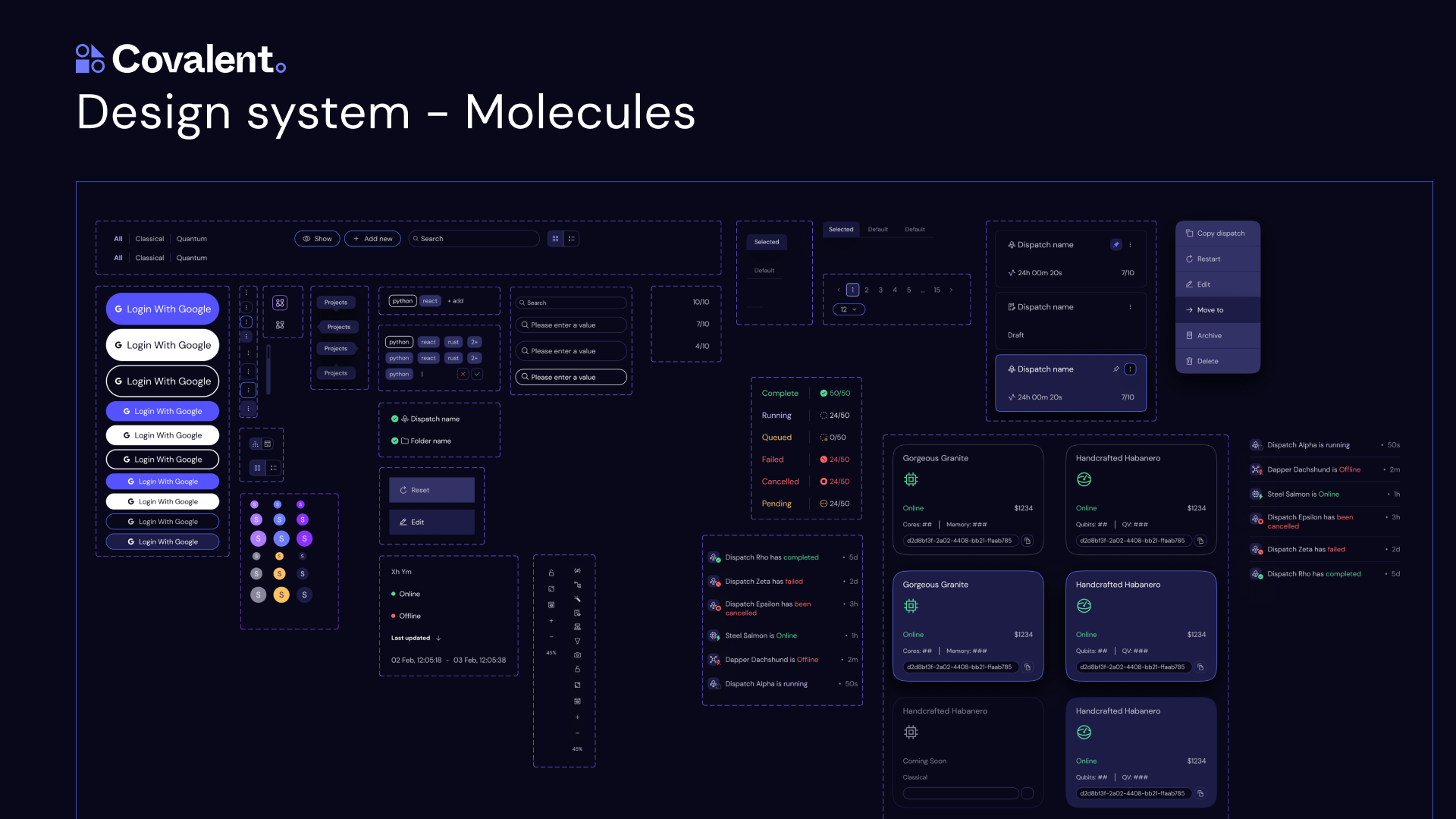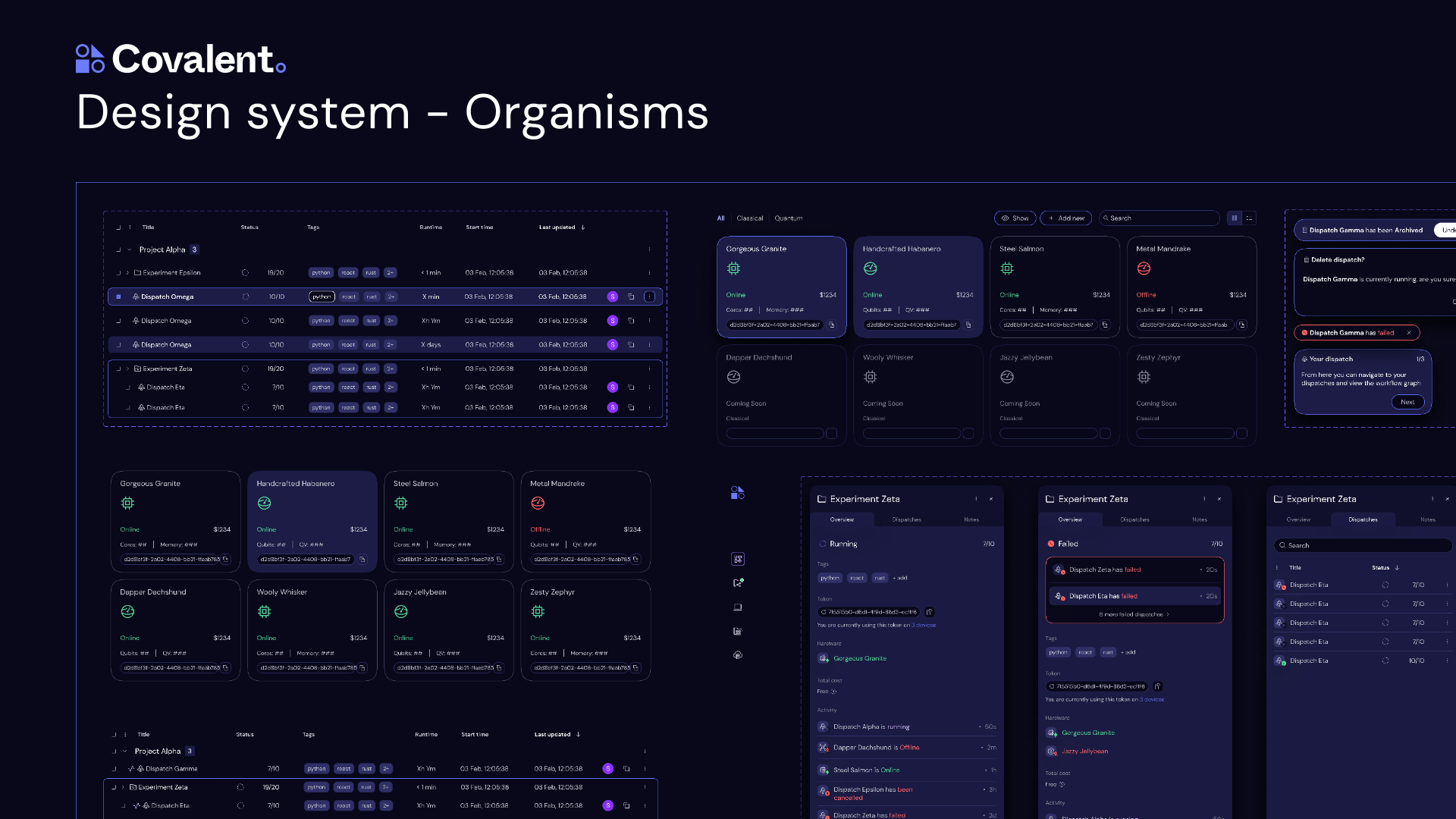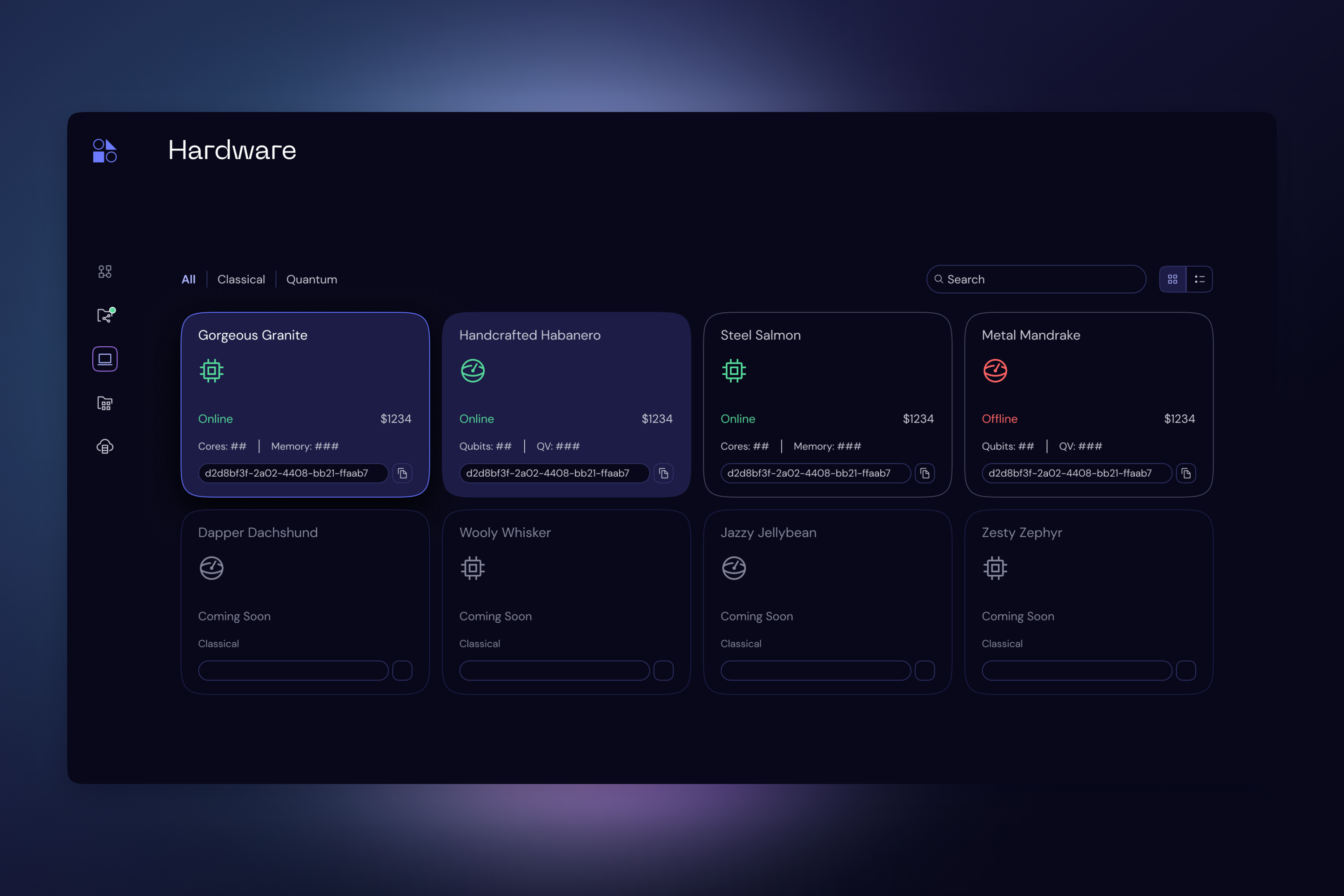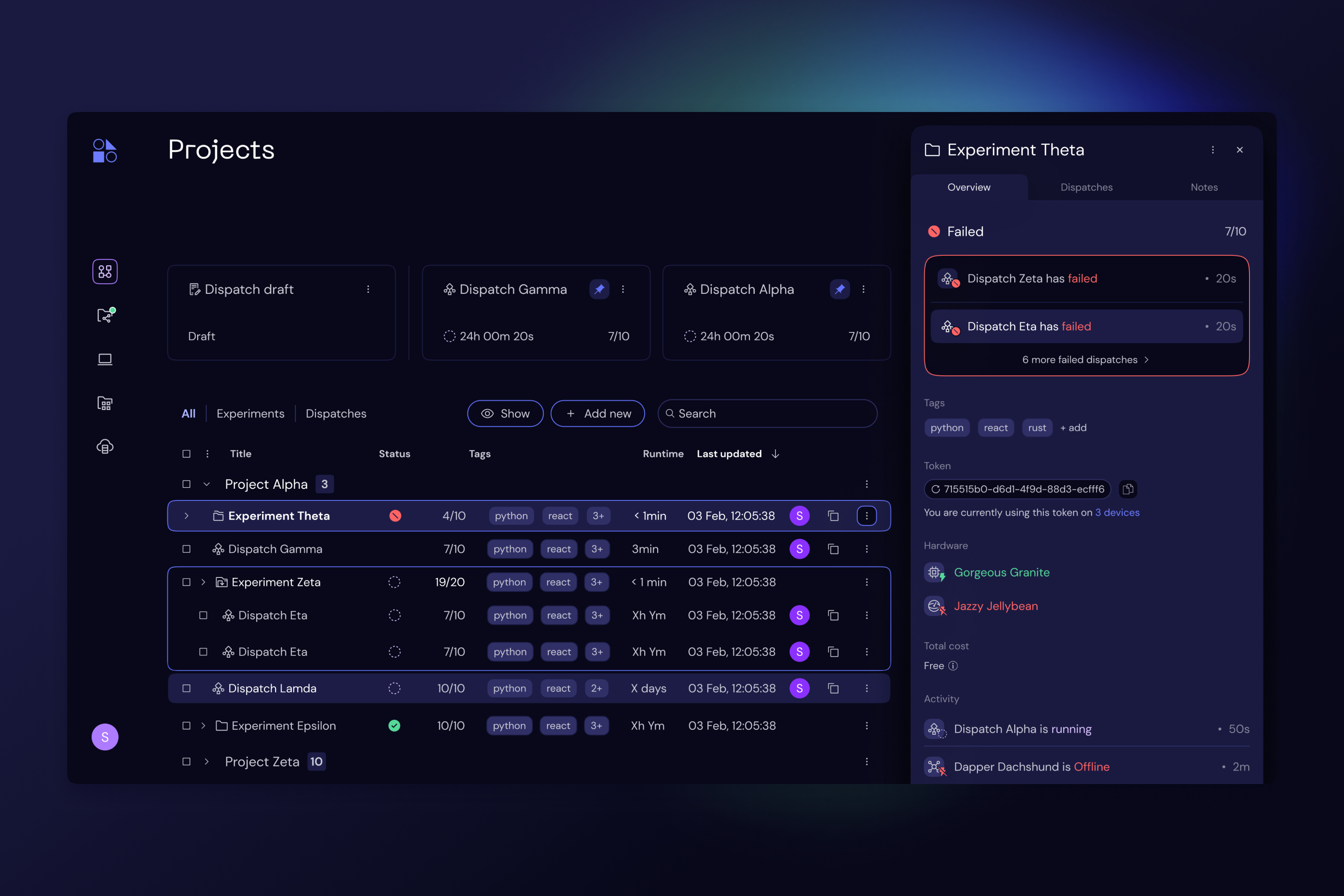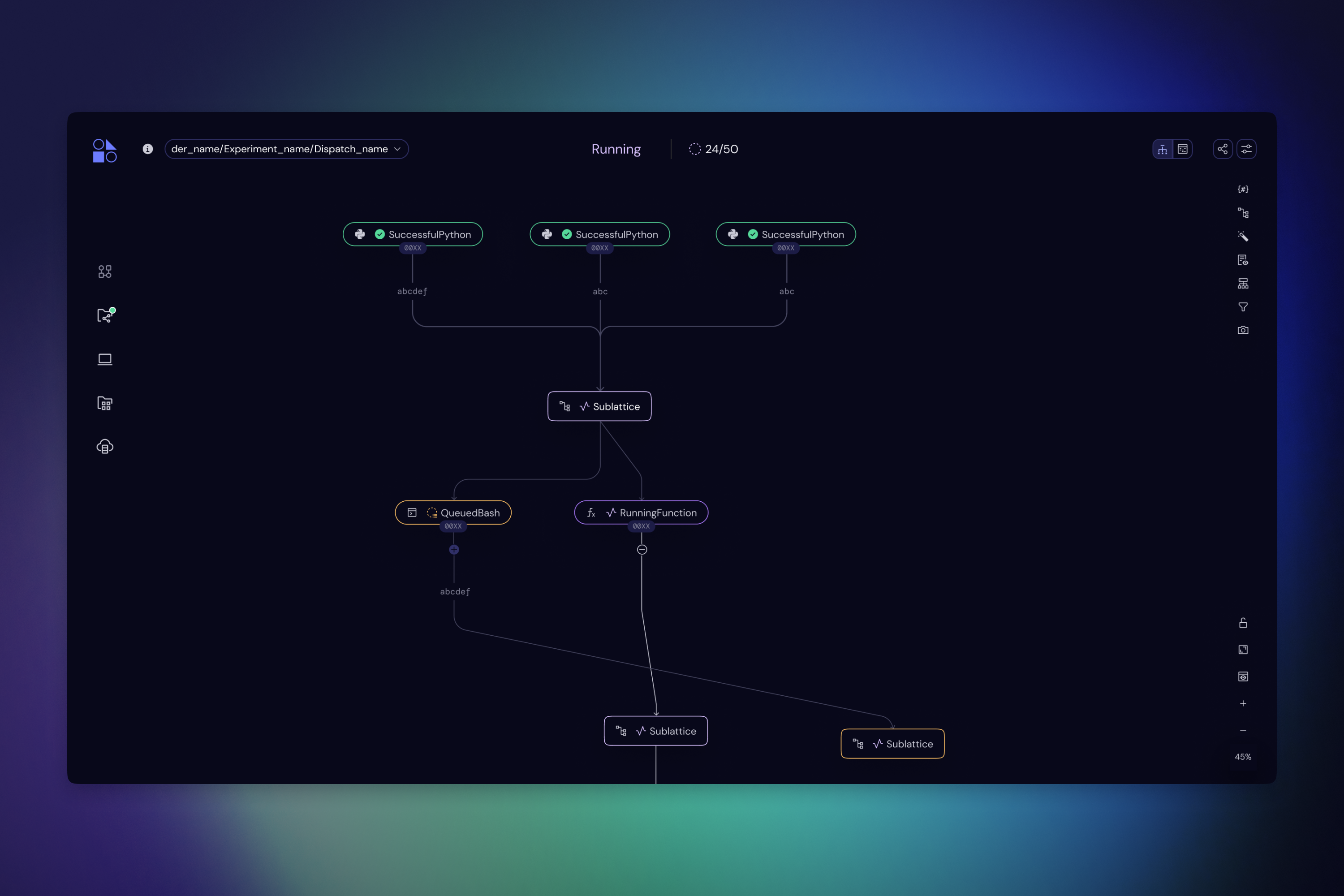Covalent
A workflow orchestration platform designed for Quantum & HPC
The challenge: Design a workflow management tool used for creating, scheduling and executing modular code on advanced computing resources over the cloud
Platforms: Responsive web-app
Toolkit: Design system, stakeholder interviews, Balsamiq, user research, comparative assessment, user testing, Figma
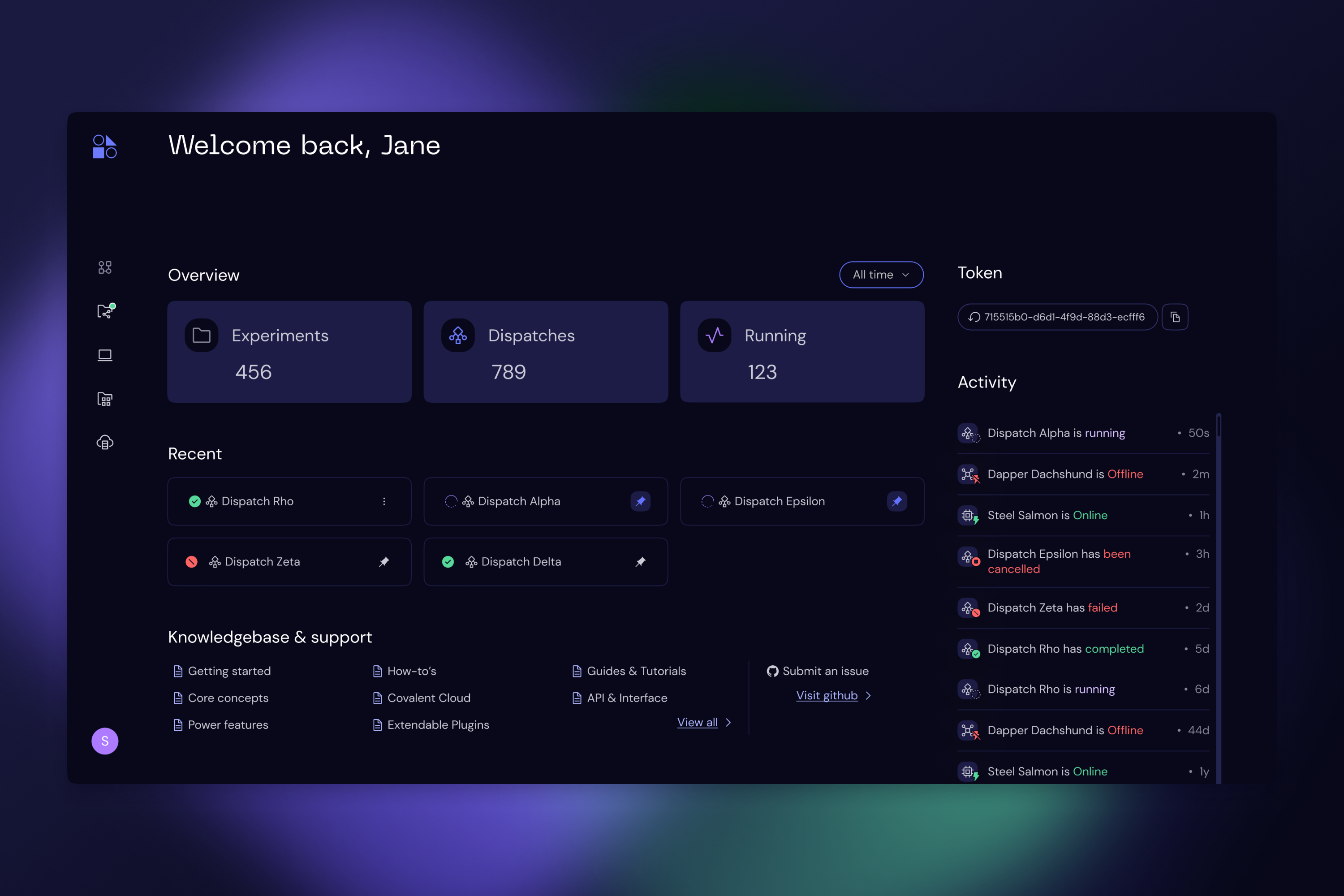
Covalent is a cloud operations platform that helps users run scalable operations on advanced computing resources, including CPUs, GPUs and QPUs.
Covalent emphasises heterogeneous workflows, allowing users to easily mix and match languages, clouds and hardware backends. It is industry agnostic for users who want to prototype computationally intensive ML models, bio & life scientists running image analysis for drug discovery, and computing scientists who may want to rapidly iterate, organise and collect large datasets collaborating with other scientists.
I was first brought into the project to help design and build their Open Source dispatch management web platform version.
Following the success of the Open Source UI experience, Covalen’ts efforts turned into adopting and further enhancing that experience for their cloud enterprise product.
The enterprise product supports more complex workflows; the User should be able to initiate dispatches with Python functions that will be instantly represented on the front-end UI, as well as monitor, manage and organise these dispatches.
At the same time, users should be able to scale any part of their dispatch, adding and removing computational resources ad hoc based on their needs. For that, they need to be able to manage hardware (classical and quantum devices), monitor their usage and status, and understand the impact these devices have on their workflows and experiments.
As a lead product designer in the team, I collaborated with key stakeholders, scientists and the dev team from the initial stage, organising workshops and performing comparative assessments of products with similarly heavy operations. Additionally, I performed user testing with wireframes and designed highly polished workflows based on Covalent’s new branding.
The platform supports many micro-interactions to aid users with tasks, dashboards for monitoring dispatches, projects and devices, and a collaborative feature to invite and share projects with other users.
This all was supported by creating a scalable design system to match the futuristic branding and functions of the product.
